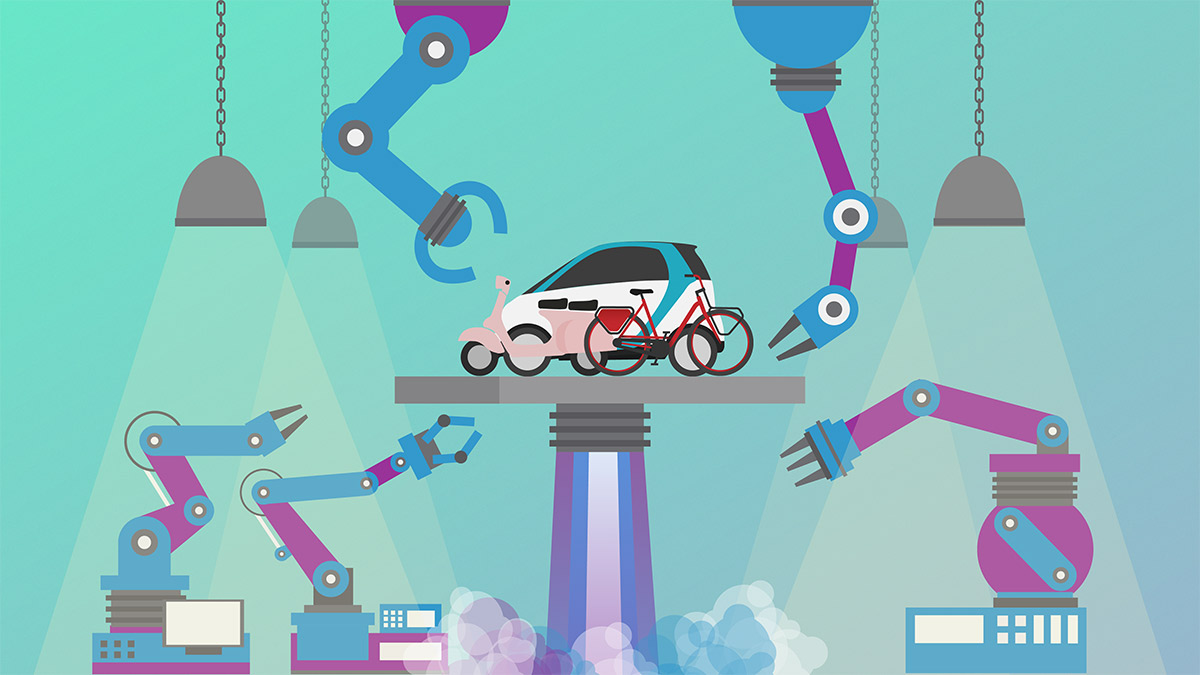Geofencing for cities: part 2 (Geofencing and bikesharing)
Also available in Dutch.
The leading ideology behind “geofencing for cities” is giving control over public space back to the elected representatives of the city. As discussed in part 1, current trends surrounding IoT have made it very difficult for cities to effectively set regulation and enforce said regulation of the public space. A prime example of this is the bikesharing revolution, which is currently in full swing. Millions of bicycles are flooding the streets of countless cities around the world while the companies behind it are thousands of kilometers away.
A geofence platform controlled by the city would enable the city to set clear rules for all the bikesharing companies. Also, it would provide the city with an easy way to monitor and enforce these rules. Any new bikesharing provider who wants to enter the city would have to connect and adhere to the rules of the platform. Below is an example of how cities can use a geofencing platform for bikesharing, for this example the X-Bike platform was used.
Step 1: Building a plan
Both Xbike and local mobility experts will go into conclave with a city to discuss their needs and best practices in terms of bikesharing in their specific region. This includes advising cities on how to optimize their infrastructure, policies and marketing campaigns to benefit cycling as a whole. This will result in a specific bikesharing plan for each individual city. The plan will include elements concerning among others: pricing, locations, regulations, goals, milestones, quality standards, service level, bike types/design, and general structure.
Step 2: Creating the platform
Xbike will create all applicable geofence zones and prepare the platform to adhere to all rules set in the plan and setup monitoring and reporting elements. One if the benefits of working with a platform like Xbike is that all the rules are not set in stone. All geofence zones and their rules can be changed in a matter of minutes. If new insights by the city require a different approach to bikesharing in the future, the platform can be quickly and easily adjusted.
Step 3: Finding the right operators
Once the platform has been molded in accordance with the plan set by the city an operator for the bikesharing system must be found. Because the Xbike platform can also provide all necessary software and hardware for operators, finding a local entrepreneur is favorable. Again, this is at the full discretion of the city itself, multiple options are available. There is also no limit to the amount of operators. For instance, there can be one operator for regular bikes and another for e-bikes etc.
Step 4: Implementation
After finding the right operators for the city, the implementation phase starts. One of the largest benefits for the users of the bikesharing scheme is that, no matter how many operates there are, with the Xbike platform they will all be connected to one app. This means that a user can rent every bike from every operator on the entire platform with just one app. In this step promotion and close monitoring is key to making the bikesharing scheme a success.
Step 5: Monitoring, adjusting and optimizing
Once the bikesharing scheme is operational, the X-Bike platform will provide the city with all the tools needed to monitor the system as closely as the city wants. At the same time Xbike and local mobility experts will do the same. This to make sure problems are proactively solved and to optimize the system according to real-time data provided by the active scheme. At any time the city can decide to make adjustment to the scheme if the city wishes so.
There are many benefits for a city to work with a geofence bikesharing platform like Xbike. Foremost, it ensures that the city is in control at all times and it allows for easy adjustments. Also, it provides a city with all the information to effectively monitor the scheme and also provides the data to be used for other mobility optimizations.
Geofencing can provide a city with numerous other benefits besides optimizing and regulation bikesharing. In part 3 of this series the future applications of geofencing for cities will be discussed.




